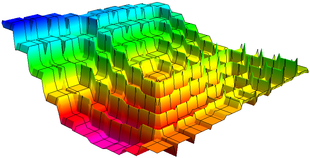10-327/Homework Assignment 5 Solutions
| ||||||||||||||||||||||||||||||||||||||||||||||||||||||||||||
Solution
page1 page2 page3 page4 page5 page6 page7 page8 page9 page10 page11 page12 page13 page14 page15 page16 page17 page18
An assignment without a solution is like a nightmare to me. I like every question accompanied with a clean solution aside.(Might not be the case for research question because they are just simply too hard.) I would like to share this happiness of understanding and acquiring knowledge with everybody because I don't think this class is a battle. I certainly don't like the idea that we should keep information/answers as something like business secrets. This learning process should be enjoyable which should be full of discussions instead of things like "you have to think on your own/ I can't tell you the answer". I know maybe other people might not agree with me but I believe a positive learning environment is crucial to truly understanding something well although we should not neglect independent thinking at the same time. That is why I share whatever I have with you. If I am wrong feel free to criticize me, and I am pretty sure a lot of people don't agree with me. But that is OK because there is just no absolute right or wrong and everybody is doing what they think is right. Just like you can't say if Axiom of choice is right or not. If you believe then it is right. If you don't believe it then it is wrong. Or maybe, for the entire subject--math, if you believe it then it is right. If you don't believe it then it is completely wrong.-Kai
Too late for marks, but just in time for the holidays are the extra problems (1,6,8,12 pp 170-171) - just sketches:
1. (a) is trivial. For (b), suppose X is compact Hausdorff relative to topologies which are comparable. The identity function Id is continuous in one direction and so takes compact sets to compact sets. The rest is easy: fix any open set U and consider Id(X-U) ...
6. Also trivial. As in 1(b), use (i) compact subsets of T2 spaces are closed and (ii) closed subsets of compact spaces are compact.
8. If f is continuous, fix any point (x,y) not on the graph. Separate y and f(x) by open sets U, V, respectively. By continuity, find W open in X st f(W) is a subset of V. Then W x U is open disjoint from the graph. Conversely, if the graph is closed, apply the hint ...
12. Fix an open cover for X. For each y in Y, its preimage under p is compact, so can be covered by some finite collection of the , which also gives an open set. Do this for every y in Y. But then apply the hint to notice that we get a covering of Y by open neighbourhoods; apply compactness and the hint to conclude we only care about the preimages of finitely many of these nbds in Y, which are already inside finitely many finite unions of open sets.
Bcd 22:51, 19 December 2010 (EST)

![{\displaystyle [0,1]}](https://wikimedia.org/api/rest_v1/media/math/render/svg/738f7d23bb2d9642bab520020873cccbef49768d)





